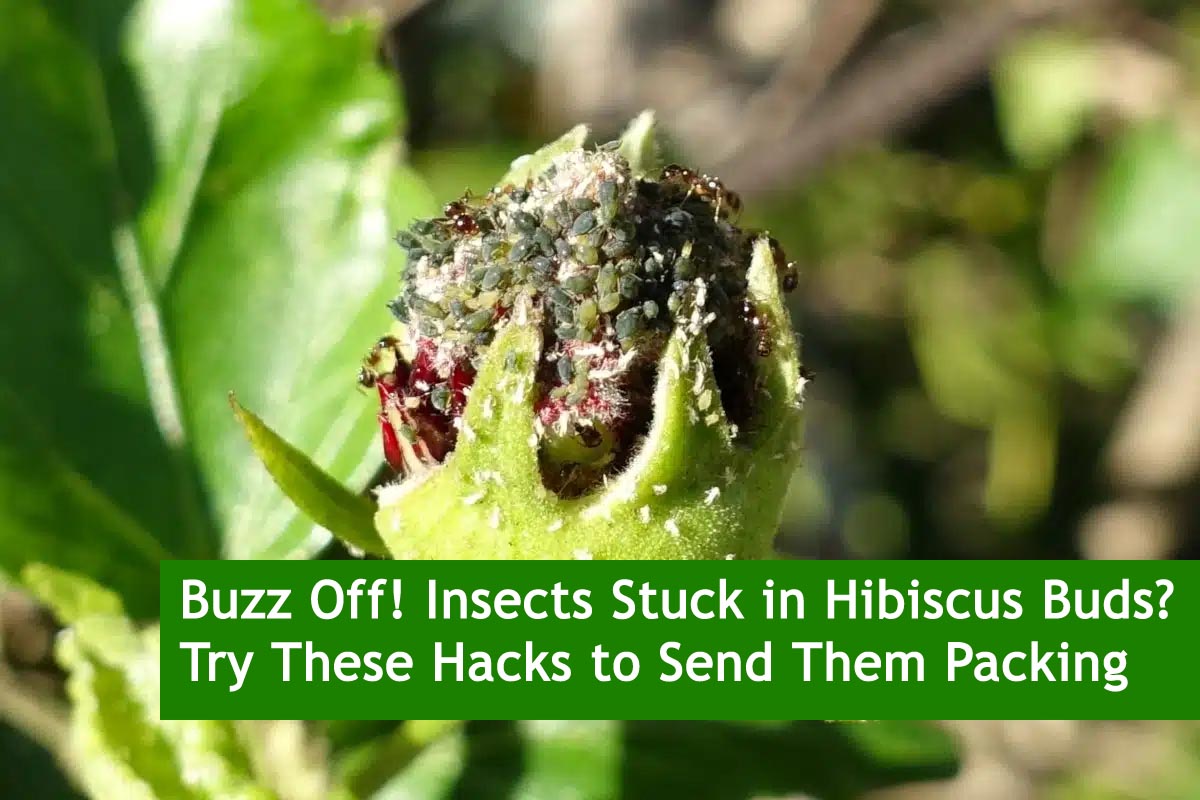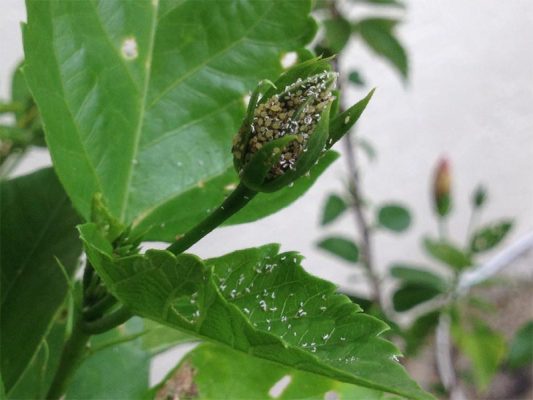
Buzz Off! Insects Stuck in Hibiscus Buds? Try These Hacks to Send Them Packing
Have you ever noticed tiny critters making a home in your beloved hibiscus buds? These beautiful flowers, with their vibrant colors and delicate petals, often attract not just human admirers but also a variety of insects seeking shelter or sustenance. While some insects may simply be passing through, others can wreak havoc on your hibiscus plants, causing damage to buds and leaves alike.
But fear not! There are several simple and effective hacks you can try to rid your hibiscus buds of these unwanted visitors. From natural remedies to DIY solutions, let’s explore some strategies to help your hibiscus thrive insect-free.
Buzz Off! Insects Stuck in Hibiscus Buds
- Neem Oil Spray
- Garlic Spray
- Diatomaceous Earth
- Companion Planting
- Pruning and Maintenance
- Water Management
- Beneficial Insects
Neem Oil Spray:
Neem oil is a natural insecticide derived from the neem tree. It’s effective against a wide range of pests, including aphids, whiteflies, and spider mites, without harming beneficial insects like bees and ladybugs. To make a neem oil spray, mix one to two teaspoons of neem oil with a few drops of dish soap and water in a spray bottle. Shake well and apply directly to the affected hibiscus buds, making sure to coat them thoroughly. Repeat every 7-14 days or as needed.

Also Read This : Mastering Potting Soil: The Ultimate Guide to Knowing When and How to Change It
Garlic Spray:
Garlic is known for its insect-repelling properties and can be used to deter pests from your hibiscus plants. To make a garlic spray, crush several cloves of garlic and steep them in hot water for at least 30 minutes. Strain the mixture and transfer the liquid to a spray bottle. Add a few drops of dish soap to help the solution adhere to the buds. Spray the mixture onto the affected areas of your hibiscus plants, focusing on the buds where insects tend to congregate. Reapply every week or after rainfall.
Also Read This : 4 DIY Organic Fertilizers: Easy Recipes for a Thriving Garden
Diatomaceous Earth:
Diatomaceous earth is a natural powder made from fossilized remains of diatoms, a type of algae. It works by dehydrating insects upon contact, making it an effective solution for controlling pests like aphids, thrips, and caterpillars. Simply sprinkle a thin layer of diatomaceous earth around the base of your hibiscus plants and on the buds themselves. Be sure to reapply after rain or watering, as the effectiveness of diatomaceous earth diminishes when wet.
Also Read This : Enhance Your Curb Appeal: Front Door Plants for a Showstopping Entrance
Companion Planting:
Companion planting involves growing certain plants together to benefit each other in various ways, such as repelling pests or attracting beneficial insects. Marigolds, for example, are known to repel aphids, nematodes, and other garden pests while attracting pollinators like bees and butterflies. Planting marigolds near your hibiscus can help deter insects and promote a healthy garden ecosystem.
Also Read This : 10 Summer Houseplants That Thrive on Neglect: Minimal Maintenance, Maximum Greenery!
Pruning and Maintenance:
Regular pruning and maintenance of your hibiscus plants can help prevent insect infestations by removing damaged or diseased foliage where pests may hide or lay eggs. Inspect your plants regularly for signs of insect activity, such as holes in leaves, distorted buds, or sticky residue left behind by aphids. Prune away any affected areas and dispose of them properly to prevent further spread of pests.
Also Read This : 4 Easy Tips to Shield Your Tulsi Plant from Harsh Sunlight
Water Management:
Overwatering can create damp conditions that attract pests like fungus gnats and spider mites. To avoid this, water your hibiscus plants deeply but infrequently, allowing the soil to dry out between waterings. Avoid watering the foliage directly, as wet leaves can encourage fungal diseases and attract pests. Instead, aim the water at the base of the plant to hydrate the roots.
Also Read This : Keep Your Kitchen Green: The Secret to Year-Round Plant Vitality Revealed!
Beneficial Insects:
Introducing beneficial insects to your garden can help control pest populations naturally. Ladybugs, lacewings, and predatory mites are all voracious predators of common garden pests and can help keep insect populations in check without the need for chemical pesticides. You can attract these beneficial insects to your garden by planting nectar-rich flowers, providing shelter, and avoiding the use of broad-spectrum insecticides.
Also Read This : Growing Plants from Flower Buds – Essential Tips to Succeed!
In conclusion, dealing with insects in your hibiscus buds doesn’t have to be a daunting task. By employing these simple hacks and incorporating them into your gardening routine, you can effectively manage pest infestations while promoting the health and vitality of your hibiscus plants. With a little patience and persistence, you’ll be able to enjoy a beautiful, insect-free garden for years to come. So, why wait? Give these hacks a try and bid those pesky insects farewell!




